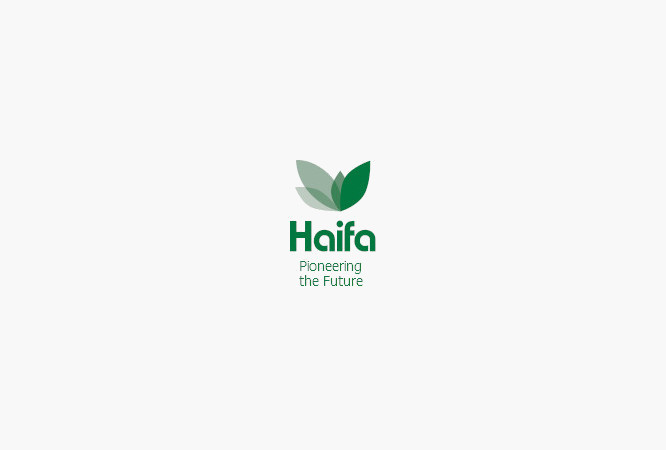Tomato Fertilizer Recommendations
In this section, you’ll find examples of tomato fertilizer schedules for various growth environments. The presented programs are suited to specified cultivation interfaces, growth conditions and target yields. The programs were generated using Haifa’s digital tools – NutriNet™, MultiMatch™ and FoliMatch™. You may use these free tools to adjust Nutrigation™, controlled release nutrition, and foliar feeding programs to your specific growth conditions.
Note: The hereunder should be regarded as a general guide only. The exact fertilization program should be determined according to the specific crop needs, soil type, water analysis, cultivar, and most important - the grower’s experience.
- Nutrigation™ (fertigation)
- Controlled Release Nutrition
- Foliar nutrition
- HaifaStim™ nutritional supplements
Nutrigation™
Nutrigation™ (fertigation) delivers pure plant nutrients through the irrigation system, supplying them precisely to the zone of most intensive root activity. A well-balanced Nutrigation™ program provides plants with their exact needs, as they change along the season.
Quantitative Nutrigation™, which is the method of choice in soils with medium to heavy texture, delivers a predetermined amount of nutrients regardless of the irrigation volume.
Proportional Nutrigation™ maintains a consistent nutrient concentration in the irrigation water, tailored to the crop's specific needs at each growth stage. This method is ideal for light soils, soilless media, and hydroponics.
Learn more about the benefits of Nutrigation™
The suggested tomato Nutrigation™ schedules were generated using Haifa’s NutriNet™ - a powerful tool that helps growers to create and Nutrigation™ (fertigation) programs, considering the actual growth conditions. A carbon Footprint Calculator embedded in the system compares the suggested Nutrigation programs with conventional fertilization practices, helping you make environmentally responsible decisions.
Nutrigation™ programs for tomato, based on the NutriNet™ system recommendations
A. Quantitative Nutrigation™ programs in medium-heavy soils, generated by NutriNet™
- Example of fertilization program in Israel (expected yield: 150 ton/ha)
Recommended nutrient rates at each growth stage (kg/ha)
| Stage | Days (estimation) | Macronutrients (kg/ha) | Secondary nutrients (kg/ha) | Micronutrients (g/ha) | |||||||||
N total | P2O5 | K2O | CaO | MgO | SO4 | Fe | Mn | Zn | Cu | Mo | B | ||
Establishment | 14 | 21 | 21 | 21 | 0 | 0 | 0 | 200 | 100 | 33 | 25 | 16 | 50 |
flowering | 10 | 25 | 15 | 40 | 9 | 3 | 12 | 200 | 100 | 33 | 25 | 16 | 50 |
flowering and ripening | 10 | 35 | 21 | 56 | 15 | 6 | 18 | 200 | 100 | 33 | 25 | 16 | 50 |
beginning of harvest | 10 | 45 | 26.5 | 71.5 | 24 | 11 | 21 | 200 | 100 | 33 | 25 | 16 | 50 |
Harvest | 50 | 250 | 147 | 397 | 153 | 75 | 150 | 1500 | 750 | 255 | 187 | 124 | 400 |
Harvest end | 50 | 300 | 176 | 476 | 160 | 80 | 150 | 1500 | 750 | 255 | 187 | 124 | 400 |
Total | 144 | 676 | 406 | 1061 | 361 | 175 | 351 | 3800 | 1900 | 634 | 474 | 315 | 1000 |
Recommended fertilizers amounts at each growth stage (kg/ha)
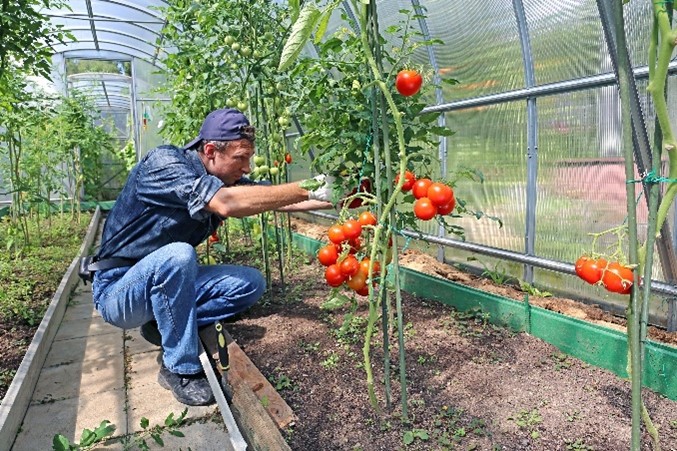
| Establishment | flowering | flowering and ripening | beginning of harvest | Harvest | Harvest end | Total |
45 kg | 87 kg | 121 kg | 155 kg | 859kg | 1030kg | 2.3 ton | |
34.43 kg | 24.59 kg | 34.43 kg | 43.44 kg | 241kg | 288.50 kg | 666 kg | |
Ammonium Sulphate | 51 kg | 13 kg | - | - | - | - | 64 kg |
- | - | - | 69 kg | 469 kg | 500 kg | 1 ton | |
| 19.35 kg | 41.85 kg | - | - | - | 61 kg | |
- | 36 kg | 65 kg | 109 kg | 678 kg | 725 kg | 1.6 ton | |
2.8 kg | 2.8 kg | 2.8 kg | 2,8 kg | 20.8 kg | 20.8 kg | 52.58 kg | |
Borax | 434 grams | 440 grams | 440 grams | 440 grams | 3.5 kg | 3.5 kg | 8.65 kg |
To view the full program in Nutrinet™ click here. For the full program in PDF format click here.
2. Examples of quantitative Nutrigation™ programs in various regions, generated by NutriNet™
B. Examples of proportional Nutrigation™ in light soil and soilless cultivation, generated by NutriNet™
- Example of fertilization program in South Africa (expected yield: 200 ton/ha)
Recommended nutrient concentrations
| Stage | Days | Macronutrients (ppm) | Secondary nutrients (ppm) | Micronutrients (ppm) | EC (dS/m) | ||||||||||||
N total | N-NH4 | N-NO3 | N-NH2 | P2O5 | K2O | CaO | MgO | SO4 | Fe | Mn | Zn | Cu | Mo | B | |||
| Summer | 240 | 163 | 17 | 146 | 0 | 98 | 286 | 170 | 40 | 167 | 1.5 | 0.75 | 0.25 | 0.19 | 0.13 | 0.5 | 1.54 |
Recommended fertilizer amounts at each growth stage (for 1000 liter stock-solution tanks)
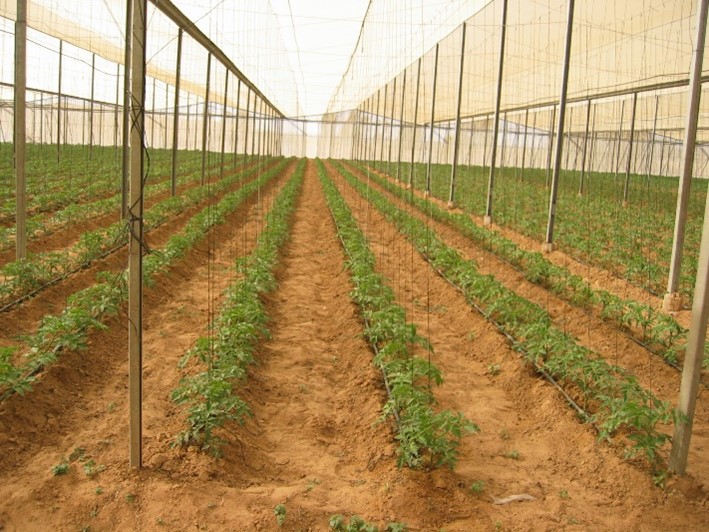
| Tank A | Tank B |
Injection rate (l/m3) | 4.7 | 3 |
94 kg |
| |
Ammonium Sulfate | 10.5 kg |
|
40 kg |
| |
54 kg |
| |
Borax | 0.9 kg |
|
| 193 kg | |
| 7 kg |
To view the full program in NutriNet™ click here. For the full program in PDF click here.
2. Examples of proportional Nutrigation™ programs in various regions, generated by NutriNet™
| ||
| ||
|
Get professional tips for preparation of nutrient solutions in a two-tank system
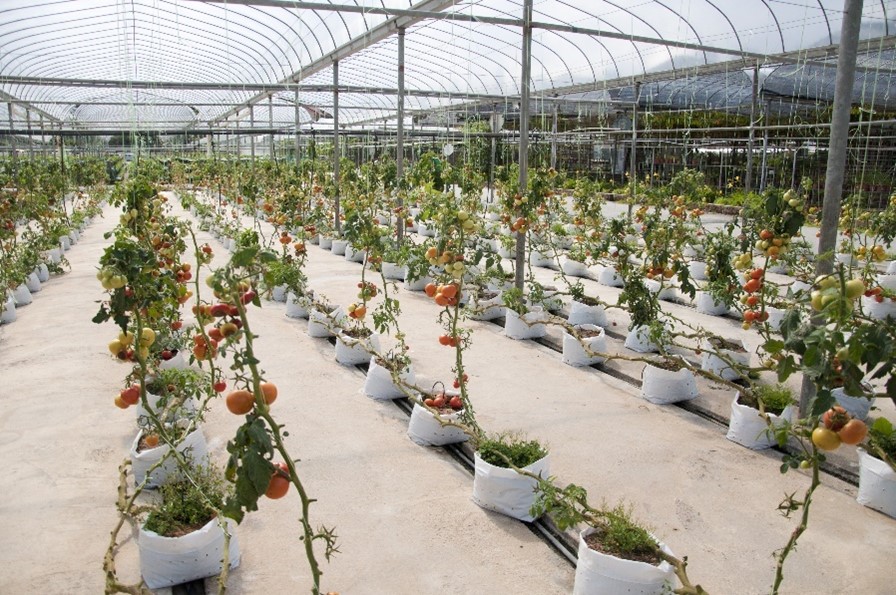
Controlled Release Fertilizers - Multicote™ Agri
Single, pre-planting application of Multicote™ Agri Controlled Release Fertilizers feed crops continuously throughout the growth season – for optimal growth and yield production.
Based on Haifa’s polymer coating technology, Multicote™ Agri release nutrients to the soil in a gradual manner, according to plant’s requirements. This prevents the leaching of nutrients, thus improving nutrient use efficiency and allowing for reduced application rates.
The recommendations hereunder were generated by the MultiMatch™ tool, that also estimates the environmental footprint of the suggested fertilization program and compares it to conventional practice.
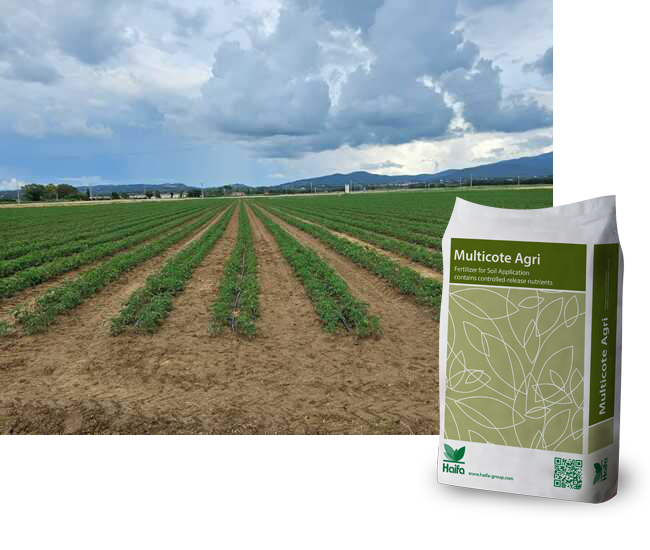
Growth environment | Soil type | Expected yield (ton/ha) | Recommended formula | Application rate (kg/ha) | kg/ha | ||
N | P2O5 | K2O | |||||
Greenhouse
| Medium-sandy | 180 | Multicote™ Agri 6M | 1520 | 205 | 76 | 466 |
Silty-clay | 180 | Multicote™ Agri 6M | 1630 | 205 | 76 | 465 | |
Open field (processing tomatoes) | Medium-sandy | 130 | Multicote™ Agri 4M | 1540 | 260 | 65 | 390 |
Silty-clay | 130 | Multicote™ Agri 6M | 1680 | 260 | 65 | 399 | |
*Additional application of secondary and micronutrients is required. | |||||||
For complete recommendations, contact your local Haifa representative
Complementary Foliar nutrition
Foliar nutrition provides fast, on-the-spot nutrition to ensure high, top-quality yields. It serves as an effective supplementary feeding to complete soil fertilization and for prompt correction of nutrient deficiencies. Foliar application of nutrients at specific stages of crop development boosts yields and improves quality.
Get tips for successful foliar nutrition
Growth stage | Product | concentration (g/l) | Spray volume (l/ha) | Max. application rate |
establishment | 10 | 200 | 2 | |
flowering and fruit set | 10 | 300 | 3 | |
5 | 300 | 1.5 | ||
fruit development | 15 | 300 | 4.5 | |
5 | 300 | 1.5 | ||
fruit ripening till end of growth cycle | 15 | 300 | 4.5 |
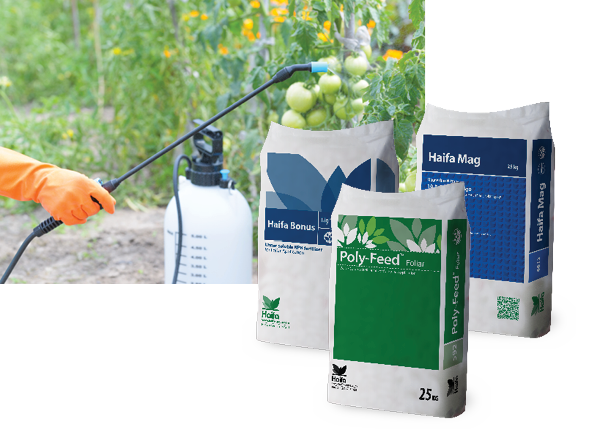
HaifaStim™ nutritional supplements
HaifaStim™ is a range of specialty plant biostimulants – nutritional supplements carefully formulated to reinforce the plant and to improve its growth environment. HaifaStim™ products support optimal growth, alleviate stresses, boost yields, and maximize quality.
Recommended HaifaStim™ treatments for tomatoes
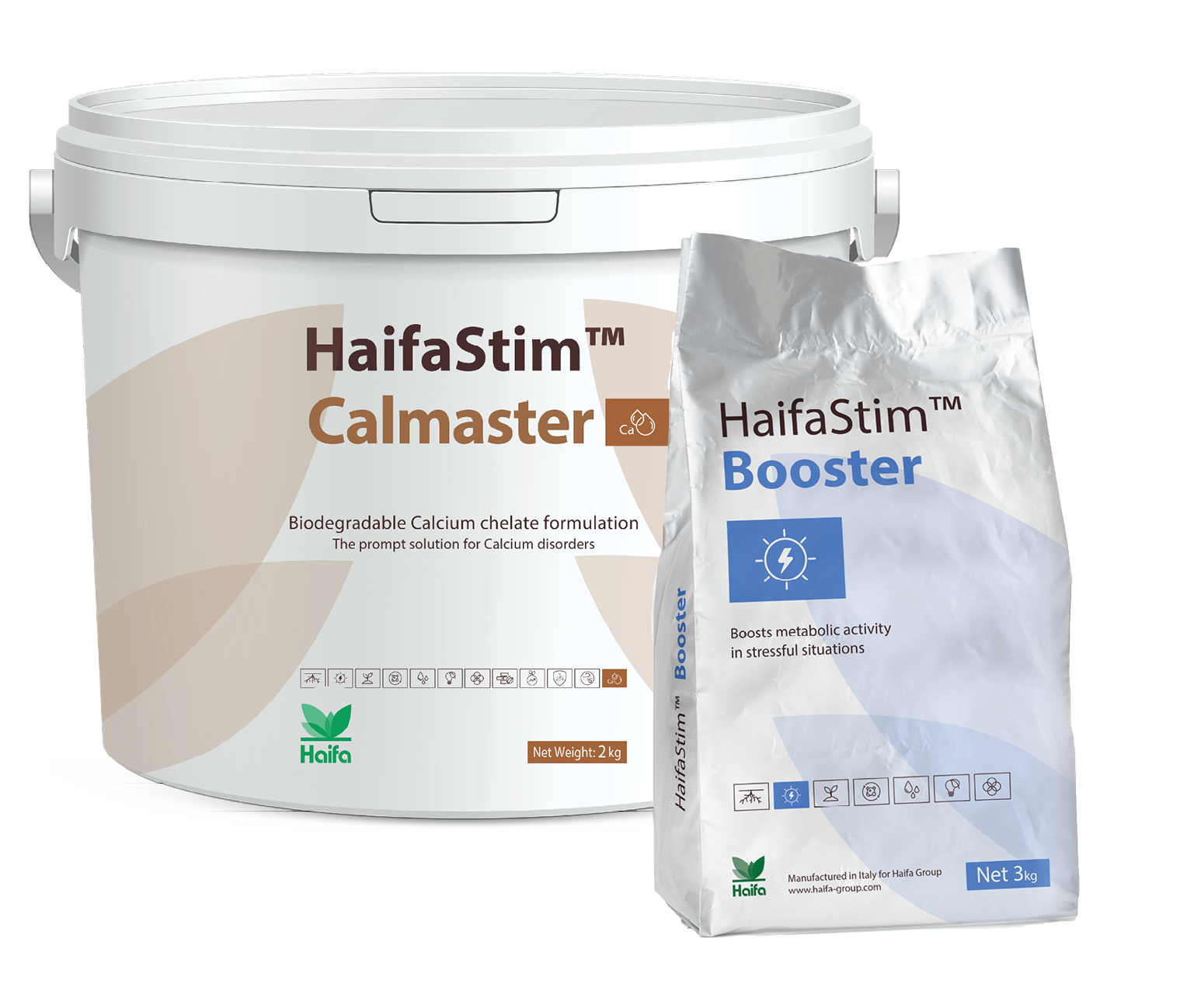
Stage | Product | Action / benefit | Application rates | |
Nutrigation™ | Foliar | |||
From 1st leaf, during the vegetative stage until initial flowering and color break | Boosts growth processes and alleviates abiotic stresses | 5-10 kg/ha per irrigation.
| 100-200 g/hl, apply every 10-15 days. | |
From fruit setting until harvest | Prevent BER, Improve fruit quality and extend shelf life | 2-3 kg/ha in the nutrient solution, every 15 days | 2kg/ha or 200gr/100lt spray solution, apply every 7-15 days | |
Additional HaifaStim™ products
Download the complete Tomato cultivation PDF





